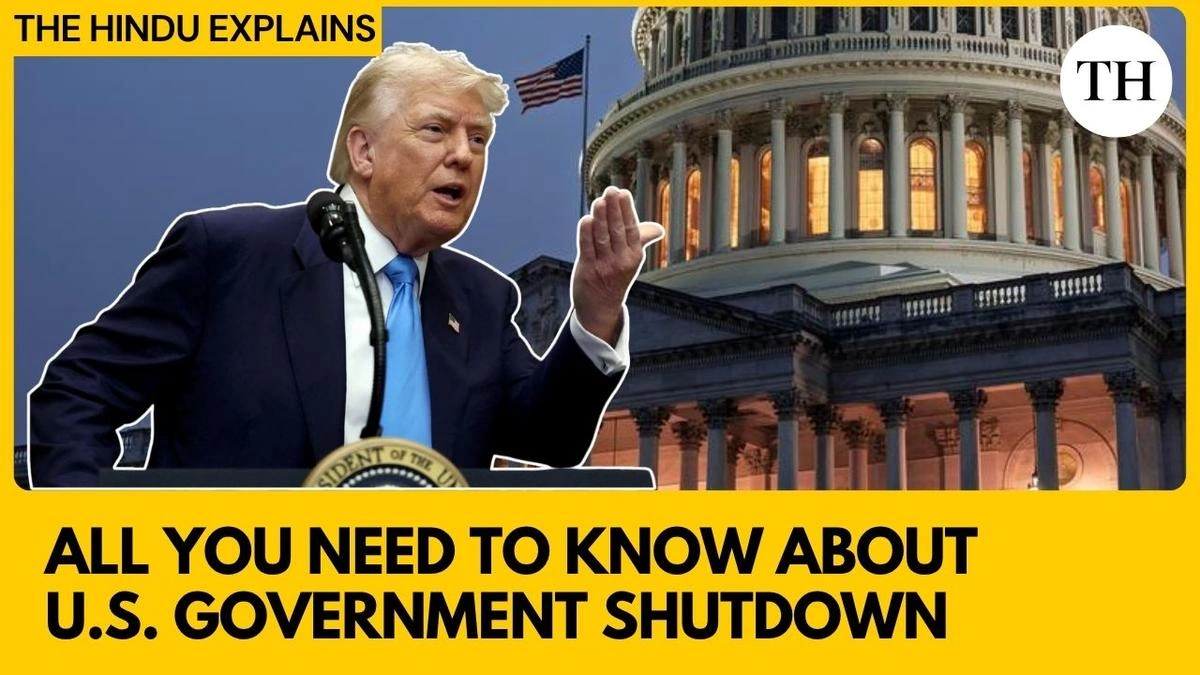Ever feel like you’re watching a political drama unfold, but you’re not quite sure what’s really going on? That’s how many Americans feel during a government shutdown . It’s not just about politicians bickering; it’s about real-world consequences. So, let’s dive into the “why” behind it all, because, honestly, it’s more complicated than you might think.
The Budget Battleground | Understanding Appropriations

The core of most government shutdowns lies in the annual appropriations process. See, Congress is supposed to pass 12 appropriations bills each year to fund various government agencies and programs. But, and this is a big ‘but’, if they can’t agree on these bills before the fiscal year begins on October 1st, well, things grind to a halt. Agencies without approved funding have to cease operations, which leads to furloughs (temporary layoffs) for many federal employees.
But why can’t they agree? It often boils down to disagreements over spending levels, policy riders (which are basically unrelated provisions tacked onto the bills), and good ol’ fashioned political maneuvering. Sometimes it is about funding disagreements , or other times it is about a particular issue one party wants to resolve.
The Political Poker Game | Strategy and Standoffs
Government shutdowns are rarely just about the budget itself. They’re often used as leverage in a larger political game. Parties might use the threat of a shutdown to push their agendas, knowing the other side wants to avoid the negative publicity and economic disruption. Think of it as a high-stakes poker game where everyone’s bluffing (or at least trying to).
A common mistake I see is thinking it’s always one party’s fault. It’s usually a complex interplay of factors. You might see headlines blaming one side, but dig a little deeper, and you’ll find both parties playing their own games. Marco Rubio , a prominent politician, has often voiced his opinions on fiscal responsibility, adding another layer to this complex debate.
The Real-World Ripple Effect | Who Actually Gets Hurt?
Here’s the thing: government shutdowns aren’t just abstract political events. They have real-world consequences for ordinary people. Federal employees face furloughs, meaning they’re temporarily out of a job and a paycheck. National parks might close, impacting tourism. And certain government services, like passport processing, can be delayed. The shutdown impact can be severe for federal workers.
But it’s not just federal employees who feel the pinch. Businesses that rely on government contracts can see their revenue dry up. The stock market can react negatively, adding to economic uncertainty. The disruptions can be far-reaching and often disproportionately affect vulnerable populations.
Is There a Way Out? Budget Resolutions and Continuing Resolutions
So, what are the possible solutions? One option is for Congress to pass a budget resolution, which sets overall spending targets. However, these resolutions are non-binding, meaning they don’t guarantee that appropriations bills will actually be passed. Another option is a continuing resolution (CR), which provides temporary funding to keep the government running while Congress continues to negotiate. CRs are basically a band-aid solution, kicking the can down the road.
What fascinates me is how often these temporary fixes become the norm. Congress seems to lurch from one budget crisis to another, relying on CRs instead of addressing the underlying issues. It’s a bit like treating the symptoms without ever tackling the disease.
Long-Term Consequences | Eroding Trust and Economic Uncertainty
Frequent government shutdowns have a corrosive effect on public trust. When people see their government constantly teetering on the brink of closure, they lose faith in its ability to function effectively. This can lead to disillusionment and disengagement from the political process. And, let’s be honest, it’s not a great look on the world stage.
Moreover, the uncertainty created by these shutdowns can have a chilling effect on the economy. Businesses become hesitant to invest, consumers become more cautious about spending, and the overall economic outlook becomes clouded. Lisa Cook , a prominent economist, might offer insights into the specific economic consequences of these events.
Ultimately, government shutdowns are a symptom of deeper political divisions and a failure to compromise. They’re a reminder that our government is only as effective as the people we elect to run it. Political polarization is a major factor in these shutdowns.
FAQ | Government Shutdowns Explained
What happens during a government shutdown?
Non-essential government services are temporarily suspended, and many federal employees are furloughed.
Why are government shutdowns bad?
They disrupt services, harm the economy, and erode public trust in government.
How can a government shutdown be avoided?
Congress needs to pass appropriations bills or a continuing resolution before the fiscal year begins.
What’s the difference between a budget resolution and a continuing resolution?
A budget resolution sets spending targets, while a continuing resolution provides temporary funding.
Who is responsible for a government shutdown?
It’s usually a result of disagreements between the President and Congress, or between different factions within Congress. Congressional gridlock often leads to shutdowns.
How does a government shutdown end?
When the President and Congress reach an agreement on funding, they pass a bill to reopen the government. Federal budget impasse must be resolved.
So, next time you hear about a potential government shutdown, remember it’s not just another news story. It’s a reflection of our political system, and it has real consequences for all of us. The dance between the parties often depends on partisan politics .




